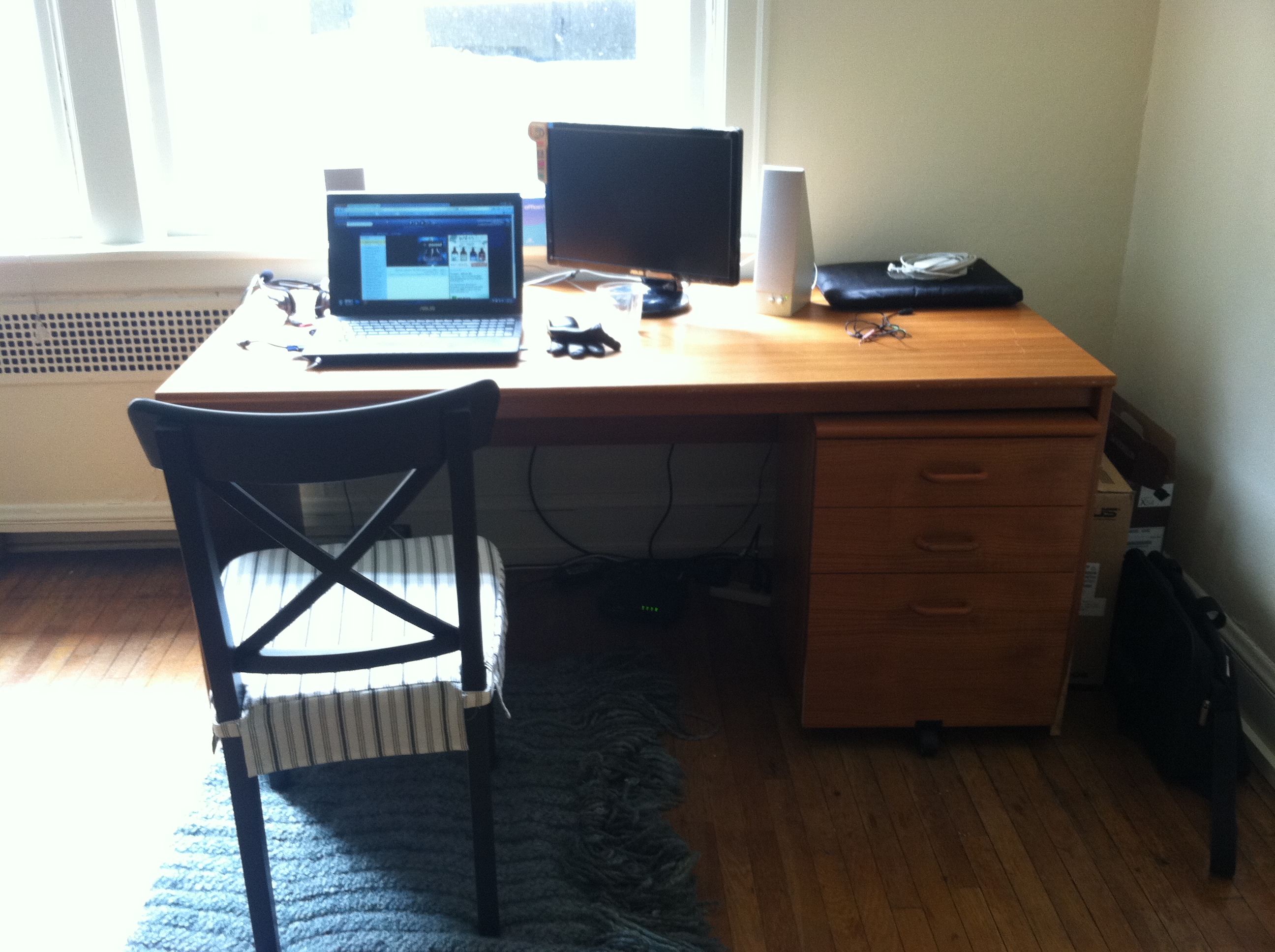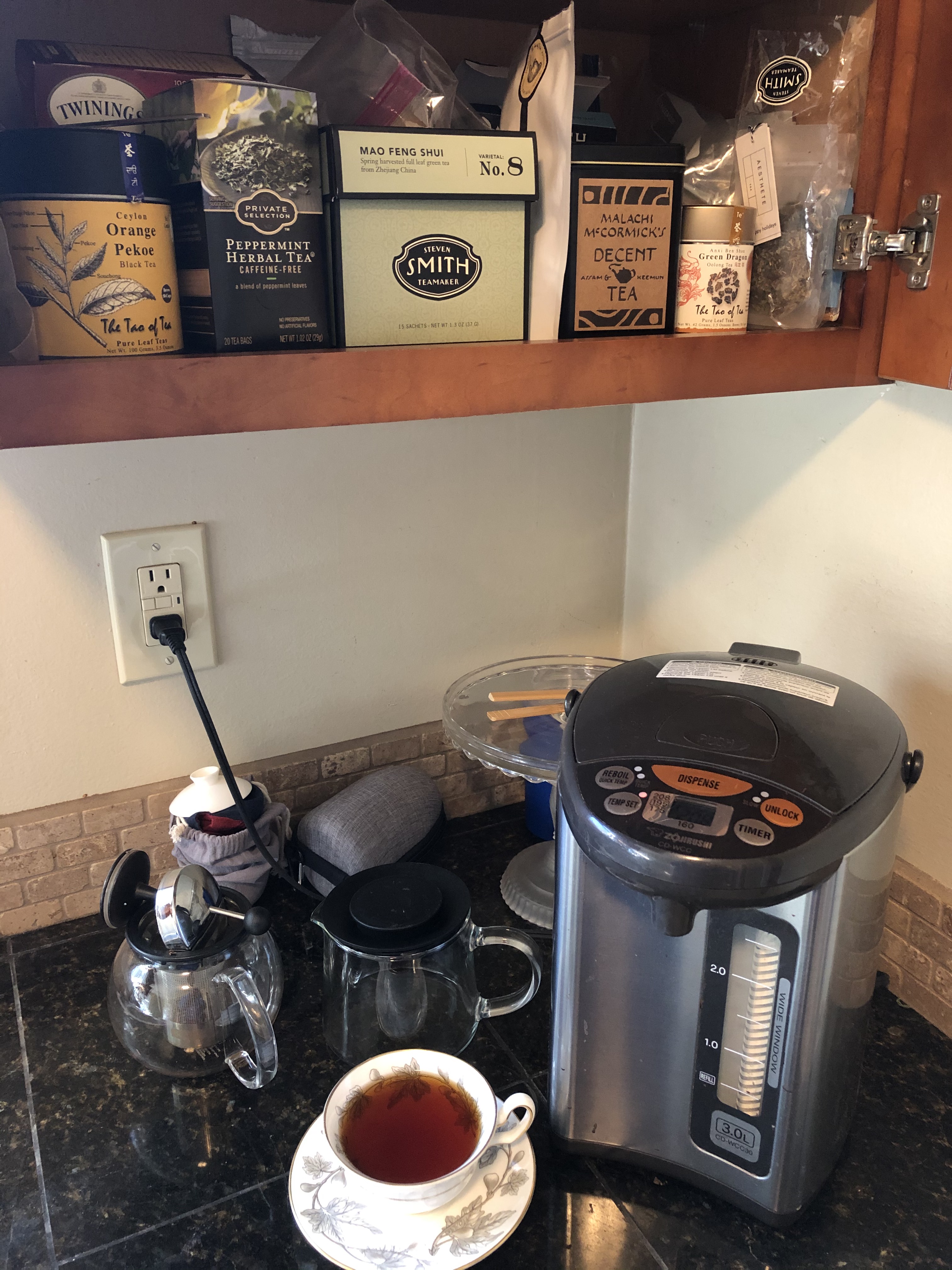Work in the Time of Corona
With the spread of COVID-19, many tech companies are sending employees home to work remotely. As someone who has worked remotely for multiple companies, in different setups, I wanted to offer some assurances and tips for maintaining your mental health while adjusting to this new life.
This is a long post, but I hope it brings you some amount of comfort and support in the days ahead.
It’s ok to feel bad
Tech workers love to gripe about open office plans, and they definitely have their pitfalls. But switching to a fully remote setup is a large shift, and it’s ok to feel bad. Even those of us (myself included) who prefer to work heads-down will feel a difference. We take for granted the subtle signal of normalcy being around people gives us, even if those people are milling around in the background and not interacting with us.
Switching to remote may make you feel distracted, anxious, or depressed, and you might not know why. Being alone all day, even with coworkers in a chat window, can make you feel isolated and hyper-focused on negative thoughts. It’s easy to spiral on the tone of a single chat message.
And that’s before acknowledging that these are unusual and stressful circumstances. You are working remote due to a looming pandemic. It’s possible your spouse or child was sent home as well, so there’s new and different stimulation around you. There’s a lot of uncertainty and abrupt change in your life.
The most important takeaway from this guide, the one thing you need to absorb, is this: if you are feeling bad, reconnect with the world. You are now in an isolated environment and the easiest way to short-circuit feelings of stress and unease is to disengage from your office life and reconnect with the larger world outside it.
Normally, my main suggestion would be to go somewhere people are and have a simple interaction. For example, go to a cafe and buy a drink. Chat with the cashier. Say hi to a neighbor. These small interactions reset your brain’s threat meter and help ground you.
However, since we are in a time of social distancing, you may want to limit in-person interactions. Instead, try taking a walk and just observing people around you. Note people in the park or construction crews working. You can also take a break to watch people from your window and let some sun on your face. If you don’t want to go outside, you can reconnect by finding something happening online outside of your job. I really like to watch streamers play games live. It’s a human event that reconnects me to the world.
Recreate your rhythm
Life in an on-site office has a rhythm to it. You take breaks, chat with coworkers, and eat lunch in an environment carefully tended by a team of office managers, coordinators, caterers, and cleaning staff. And now you have to recreate that rhythm by yourself.
“That sucks!” you might say. It does suck. It’s good to recognize that you are now replacing the work done by a group of professionals. This lets you both appreciate the work they do and come to terms with the task ahead of you. Remember, you are not adding extra things to your workday. You are maintaining things you were already doing.
Get dressed
This one shows up on most remote guides, and it is an important one. Changing into “work clothes” helps put you in a “work” mindset, but, more importantly, it takes you out of a “resting” one. I have no doubt that you can still function in your pajamas, but there are mental hits to spending all day in the same clothes you wore to bed. Even glancing at your grubby self in the mirror has an effect.
So, put on some work clothes. They don’t have to be the nicest clothes, just not your pajamas. Throw on some jeans and a bra. Something I’ve found is I get colder at home, probably due to lack of movement and people around me. So, I wear jeans, but I also put a blanket on my lap and wear slippers. You might find yourself needing to dress warmer, too.
Keep your commute
If you usually commute to an office, that means you are used to going outside, being around people, and doing some amount of physical activity before starting the workday. Working remote means you no longer have that routine. But, you can recreate it.
Start your day with a bike ride. Take your dog for a walk. Go to the bakery and get a coffee for breakfast. Then come back to your desk and start the day. You can also recreate the commute home by taking an after-work walk to decompress. This ramp-up and ramp-down period is good for both getting you into a work mindset and helping you reconnect with the outside world.
Separate your desk
You’ve probably heard this already, but having a separate desk is important. Even when I was working remotely in a studio apartment, I had a desk. When I was done for the day, I turned off my monitor and unplugged my mouse.
If you don’t have room for a separate desk, do something to signal the shift. Setup a small office at your kitchen table with a company logo mug, framed photo of your family, even an old landline phone as a symbol of “the office.” When it’s time for dinner, don’t shove it to the side. Put it away and bring it out in the morning.
We do this to separate time and areas in our minds. If you’ve ever had difficulties sleeping, you’ve likely heard the advice to only use your bed for sleeping and sex. The same principle is in play here. Have a designated area for work so you can disconnect at the end of the day.
Be mindful of ergonomics. If you’re used to a nice standing desk and mechanical keyboard and you now have a laptop and an Ikea table, your body will suffer for it. Don’t ignore the pain. Tell your manager and try to figure out a game plan for giving you the setup you need. Stretch regularly and keep an eye on your posture.
Keep your workspace clean
Your big open office has a team of cleaners and admin staff to care for it. You walk through conference rooms, lounge areas, and dining halls without piles of garbage in your peripheral vision. At home, it’s just you. And a cluttered workspace will impact your productivity and mental health.
When I say workspace, I don’t just mean your desk. Your workspace is now any area you might enter throughout your workday: the bathroom, living room, kitchen, etc. I strongly encourage you to keep them tidy, because mess there will weigh you down in ways you might not realize. I found the most trouble with this when cohabitating with someone who worked outside the home. A dirty kitchen to them was something they saw at breakfast and dinner, but I saw it all day. That has impact.
Keep your workspace tidy, keep tabletops and counters clean, and open up the curtains to let in light.
Have a secondary work area
Think about how you normally operate at your company’s office. Do you stay at your desk all day? Or do you move to other areas, such as conference rooms or couches? If possible, recreate those areas at home. Move to the couch for a call or take a meeting outside, if you have an outside space. You move a lot more in an office than you might realize, and changing areas gives you a physical and mental break.
This is also helpful in homes with more than one person working remote. You can trade off who works where based on who has a meeting when. Yes, you can have conflicting meetings, and that’s something you will need to figure out with each other and your teams.
This can seem counter to the “separate your desk” advice, which is why I focus on meetings here. Taking a call on the balcony is different than coding in bed.
Stock snacks & drinks
Your office likely has snacks and you likely eat them. You might not be able to find (or afford) the fancy small-batch energy bar of the week, but you can stock up on trail mix, granola bars, veggies & hummus, and bags of popcorn. Think about when you usually grab a snack…is it right after standup? Does your coworker bring you something after their weekly staff meeting? These are important parts to your daily rhythm, and you need to maintain them.
Your office also likely has a beverage station for coffee, tea, soda, and other drinks. Think about what you drink and when and try to recreate it. I have a tea station at home complete with water boiler, teas, and nice teacups. This is one of the places where working from home means you get to enjoy some luxury! Use your favorite mug. Take fifteen minutes to sip your coffee and look out the kitchen window. Holding a warm beverage is a soothing technique that can add relief to new stress.
Eat lunch
Do you usually take a lunch hour? Take one at home. Yes, the full hour. Your mind needs a break from the work and your body needs a break from whatever kitchen island you’ve been hunched over. I have a nice remote setup, with a standing desk and monitor arm, and I still take an entire lunch hour. Use this time to get outside or catch up on Netflix.
And, no, you can’t just eat crap. That’s right, you have to care about nutrition now, too. Again, think about what you usually eat for lunch in the office and try to replicate that at home. No, you probably can’t recreate that delicious curry right now, but you can make a salad or a sandwich. YouTube is full of quick and healthy meal ideas…why not watch them on your lunch break?
Get off social media
I’m not your employer. I don’t care about your productivity. But now that you’re remote, you’re going to feel more isolated and anxious. And scrolling through an endless timeline of news updates and sad stories isn’t going to make that any easier. You will get distracted from the reality of your life (you’re working from home, making you a member of one of the safest groups in this outbreak) and find it difficult to concentrate on what’s in front of you.
So, get off social media during the day. Or, if you use mindless scrolling as a mental break, slap on some filters or change who you follow. I follow a lot of artists and find that brings a much-needed balance to my feed.
You know things out there aren’t great. You don’t need a second-by-second playthrough.
Improve your video setup
One of the main themes of this guide (if you can’t tell) is that human contact is important. One of the ways to soften your feelings of isolation when working remote is to have a proper video setup.
A proper video setup is one where your face is visible, meaning it is in-frame and well-lit. Your face should be center and your angle should show your shoulders up to a few inches above your head. People should be able to see both your eyes and your mouth (even hearing people rely on mouth movements to track language). If your work area is dark, point a desk lamp at the wall behind your screen to bounce light at your face.
I know you don’t want a camera pointed at your face. No one likes it. But everyone appreciates seeing the faces of others, to help pick up body language and make a connection. Show your face so others will as well. Some software, like Zoom, has the option of disabling your own view so you don’t have to look at your face when you talk.
Make social spaces
Recreating social spaces while working remote is, in my opinion, the hardest challenge of the shift. You go from having spontaneous interactions at the snack station to having to plan idle chit-chat. I’ll be honest, it doesn’t translate perfectly.
Something I see people struggle with is scheduling time for unstructured conversations. If it’s not a meeting or something with an agenda, they feel guilty putting it on someone’s calendar. But, guess what? You were already having those conversations. You were already using that time. The company was benefitting from that cross-pollination. Except now you have to formalize it.
Think about the random conversations you have during the week and schedule them. Even 15 minutes will do. Schedule general chat time with your team, like a coffee break in the afternoon. Chances are, if you’re being sent home from an on-site location, everyone is already in the same time zone. This makes syncing up social times a lot easier.
A special note for my fellow underrepresented people: you will feel the loss of your in-office community. Most of the teams I’ve worked on were majority white men, so to supplement I would socialize with women on other teams. If you usually socialize with a group of people outside of your team, find a way to keep that going. Have a weekly social hour with your group or eat lunch “with” them like you would normally. It helps a lot.
Stop working
When the workday is over, it’s over. You owe it to yourself and your teammates to step away for the night. Tell your team you’re signing off and do some of the physical routines we’ve already discussed: exit your home office or clear away your work area, take a walk for your “commute,” and put your notifications on silent.
Even if you’re just switching from a work screen to a personal one, that shift matters. You need to shut off your work brain so you can decompress. Now is the time to reconnect with the outside world and get a good night’s sleep.

Remember: this isn’t normal
Remote life isn’t for everyone, and you may find yourself swearing it off entirely after this stint. But please keep in mind: this isn’t normal. If your company sent you home because of COVID-19, chances are you don’t work in a remote-first environment. Which means you aren’t experiencing real remote life.
Remote-first companies provide a suite of benefits to make the experience better for everyone. These can include:
- Extensive onboarding for adjusting to remote life
- Stipends for furnishing your home office, paying for a better internet plan, covering coffee / lunch, gym memberships, and dog walking services
- Cohesive and centralized documentation practices
- Regular company meetups, including local dinners and larger in-person summits
- Desks at local coworking spaces
- A general understanding that a remote workforce functions differently than an on-site one
If you’re having a terrible time right now, that’s completely fair. But please keep in mind that you are abruptly working from home under stressful circumstances. Please don’t let this experience permanently color your views on remote work.
Above all, please monitor your general mental health and make adjustments as needed. Be kind to yourself and others. We are in this together.


